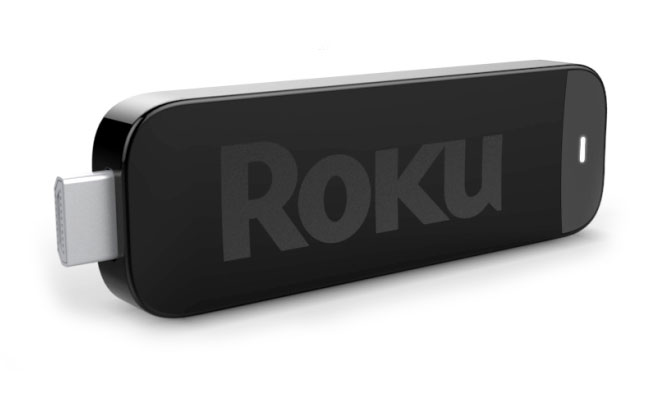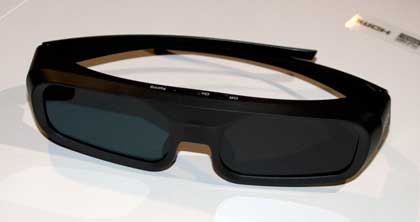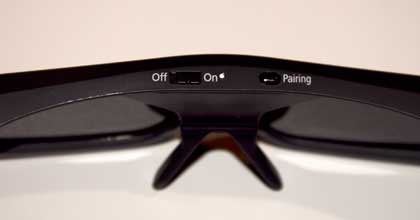Home Cinema 2030: Built in Sound, with Audio Out Feature
2 watts of sound isn't going to rock your house when you are watching a Bruce Willis movie with lots of explosions, but try hooking up an inexpensive powered subwoofer to the HC2030's audio out, to add some serious bass, and do a little house shaking.
Of course, in most cases, you're feeding your sound to a surround sound system such as a typical AV Receiver, but even if "portable," the small speaker, and a possible optional subwoofer, can really be a game changer. Also consider that much of the competition doesn't have that audio out! Interestingly, the $600 more expensive HC3020 projector lacks the audio out (but it does have a more robust 10 watt speaker setup).
If I didn't have a surround sound system, I'd rather have a 2 watt speaker and add a powered subwoofer, than just a 10 watt speaker and no real low bass. I hooked up one of the small powered subwoofers I have here, and it provided respectable bass filling our large "great room" which is over 600 sq. feet! (The powered subwoofer I used, is the same one that normally supports that room's speaker system. I simply disconnected from the room's stereo, and instead plugged it into the Home Cinema 2030! Easy).
Home Cinema 2030 Lag Times - Gamers start your consoles!
The trick for serious gamers playing games like first person shooters, is to have display lag times of 50ms or under. The lower the better, but achieving no slower than 50ms is the key. The Home Cinema 2030 (HC2030) should be at least 50ms fast. I haven't had time to confirm but will update almost immediately. Note, the menus let you choose Fast, or Fine image quality.
Choose Fast for gaming! 3 images - default Cinema mode (which means images processing on Fine), nothing turned off: Average lag time 100ms. (Slow for gaming - 1/10th second delay). Note in the images below, the upper image is the projected screen on the Epson. The lower image is the display of my MacBook Pro. To figure out lag times take the last three digits (hundreths of a second), of the computer display and subtract the value of the last three of the projected image. In this first case: 441 - 341 = 100ms lag time.
Switching to Fast Processing (from the menus), things get a lot better, achieve an acceptable 50 ms range. No other settings changed: 50ms (1/20th second) "acceptable" for high speed games.
Turned off a couple of things. I did not check to see which were affecting it, but primarily I turned of 3D mode, that is, the auto sensor that determines if the source is 2D or 3D, and more importantly, the one feature that always slows lag times, I turned off the Dynamic Iris:
This reduced the projector's input lag times to a consistent 32 to 33ms as seen here. That's pretty fast. Few gamers, regardless of skills would suffer any performance around 30ms. Keep in mind, that's faster than 30fps or 1080i/60, we are talking a one frame lag at most. Thus cutting that down to 20, would not really improve things, best I can tell. Then as I like to point out for persective, when driving, they say it takes 1/2 second - that's 500ms, to get your foot from the accelerator to the brake. 32ms sounds awfully fast to me! That's also a good bit faster than other Epson projectors which seem to have lowest lag times right at 50ms. The old Epson 8350 projector, still around is supposed to be faster than the newer models, even though we never measured it back when it was reviewed. The Home Cinema 2030 is likely at least as fast as the 8350, or faster!.
Roku Compatibility - Epson Home Cinema 2030 and 2000: "Smart" Home Projectors
I'm new to Roku. But I am a Netflix person from time to time. For those not familiar, Roku offers numerous "channels" of content. Netflix, is just one channel, of tons of channels to choose from. Time to play! I unboxed the Roku stick, put the batteries in its remote control, and plugged it into HDMI 1. The Roku logo came up. First thing is that it wanted to find a network. I hit OK to let it, and within 15 seconds it was asking for my local Wifi password. I put that in, and, Bingo, it was that easy. Next, the screen said that the Roku software was out of date, and started updating (less than 1 minute). I had to set up an account and password, which took all of 3-4 minutes.
Simple. I started off with the offering of free channels, adding a few extra. All and all, within 10 minutes of unboxing the Roku, I was cruising between channels, checking out the news on SKY, browsing Netflix, and WSJ content, TV series and so much more. Very cool. Nice to know that if my Wifi network stays up, but DirecTV goes down, I still can access TV programming, movies, news and browse the internet!
Having Roku capability right at the projector makes this a “smart” projector in the same sense as “smart TVs” Seems that one feature is missing. You can’t use Roku as a general internet browser – so it’s still not as capable as say, my Sony PS3 Blu-ray/game player. But of course any computer, iOS or Android device, can add internet browsing as long as there's a connection.
The nice thing I see about the Roku option is that it’s handy if you want to travel and take your projector with you. If you’ve got access to Wifi, then you’ve got access to content. Of course, if you have a computer with you, ther's no problem at all. And if you’ve got one of the newAndroid devices that support MHL (not many yet), you can use their browser. Not sure, though, if there’s a way to accomplish that with iOS at this time, for you Apple fans (count me as one), but there are other ways (non-Roku) to use your iPhone, iTouch, or iPad with the Epson Home Cinema 2030, to browse the internet.
Home Cinema 2030 Energy Efficiency and Green
Epson claims that their projector is very green. They feature a SmartWay logo on the information (and I assume on the final shipping product). Smartway (a business and EPA partnership program) apparently establishes certain levels of "eco" as their minimum requirement, relating to the projector, in terms of recycling, shipping, packing, etc. The Epson info also lists RoHS compliance, and "recyclable product". Epson's lamp life for its projector is longer than most. Epson's website has lots of information on eco features. Epson also likes to point out that 3LCD projectors typically draw 25% less power than DLP projectors. While overall consumption will vary from projector to projector, the first place to look is to see the rating on the lamp.
These two Epson projectors - the Home Cinema 2030 and Home Cinema 2000, use a 200 watt lamp. By comparison, the BenQ W1070 and Optoma HD25-LV - two competitors, both sport 240 watt lamps, (and some others use even bigger) so those two projectors start out needing 20% more power just to "light things up". The Epson also claims almost 50% longer lamp life at full power than either of those two competitors. 5000 hours vs. 3500 for the BenQ and Optoma. True, they all claim 6000 hours maximum, but in Eco mode, the Epson claims 6000 while the others are 5000 hours, which can stretch to 6000 if their "smart" features notice that you left the projector on, with no content, as an example, when it further reduce consumption. Anyway you slice it, your electric bill should be a good bit lower with one of these Epsons compared to the typical DLP competition. Might just save you enough electric to buy an extra couple of pair of 3D glasses.




